A little while back, I relayed my summer excursions into Alpha League with Black-Blue Aggro Control, and then an even more successful effort with Green-Red ElfBall. Alpha League is a pastime within a hobby – an escape within my escape – and a retreat into a world of nostalgic imagination and aesthetic comforts.
With those first few frenzied months under my belt, I was already planning new brews through the end of the year, including Mono Green monstrosities, Black-Red Halloween concoctions, and much more. But for September, I decided to try a month of Mono Blue Control. Blue-White Control was played out in the League, and several successful efforts had yielded refined versions of that archetype. But Mono Blue Control seemed like an archetype with potential and much room for improvement.
To be candid, I couldn’t think of many reasons to play Mono Blue over Blue-White or Blue-Red, but I wanted to try it anyway. I began my process by looking back at the list that Jeremy Jones had played in my Alpha League pod back in June, with little success to show for it. His list had many good elements, but lacked others, such as Ancestral Recall and Braingeyser.
I knew that I would play Jade Statue as a combat-based win condition, although I was unsure whether I’d run three or four. I didn’t want my creatures picked off by Fireballs, Control Magics, Psionic Blasts, and Wrath of Gods. I envisioned a control deck in the Weissman mode – with just a few win conditions.
Here is what I ended up with:
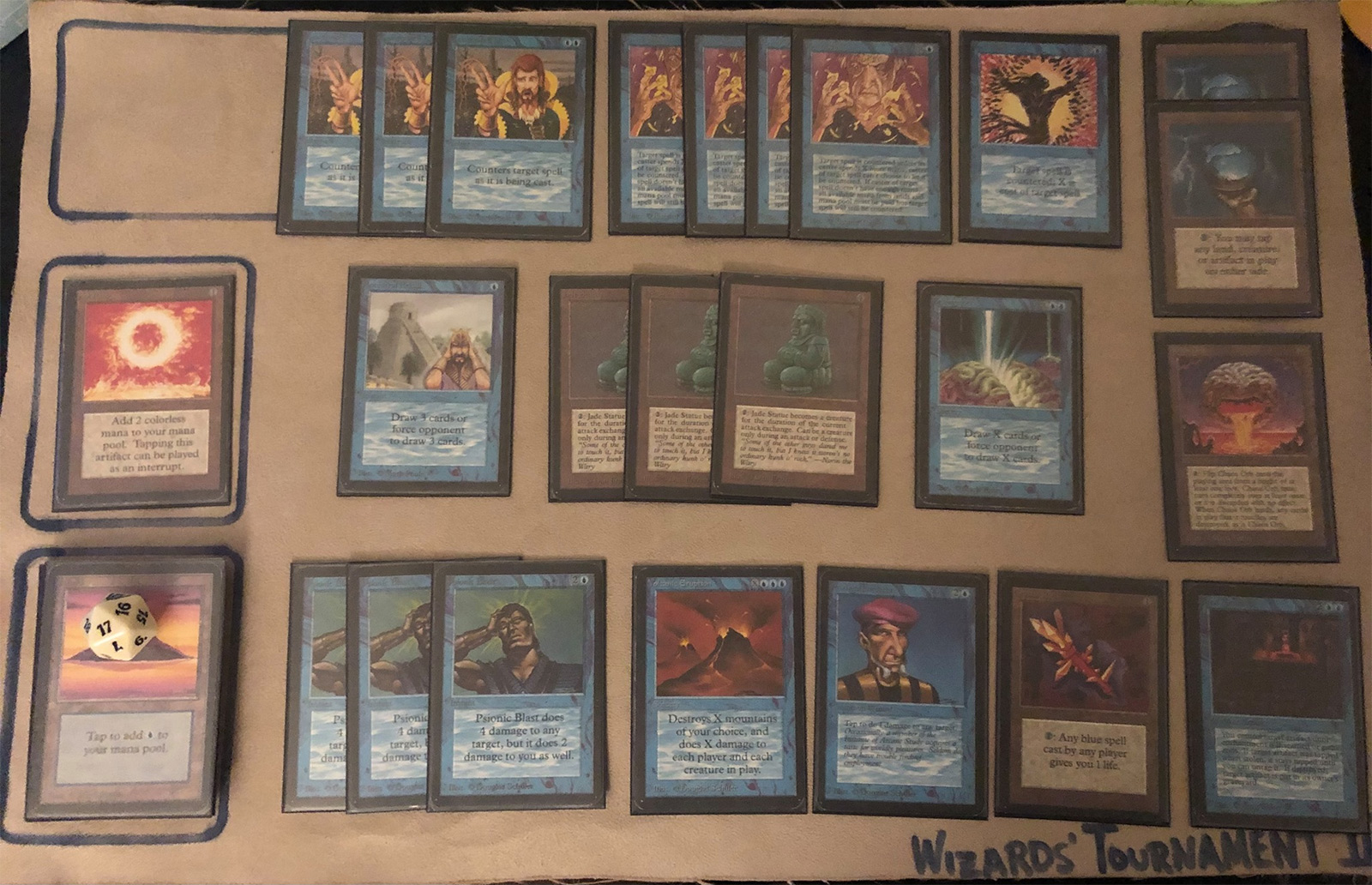
Explanations are in order.
First, league rules moderate Psionic Blast to three copies, and since Mono Blue’s main weakness is the lack of efficient removal, this was going to be a mandatory maximum. Chaos Orb was an automatic inclusion for similar reasons.
As it is rarely played anywhere, Volcanic Eruption may appear a strange inclusion until you understand that the Alpha League rule makers interpret Volcanic Eruption in the most broken possible manner. Volcanic Eruption is to be played as the (Alpha) text reads, which means that it does not require Mountains in play to burn out all creatures in play. And when your opponent has Mountains, it’s a knock-out punch. This is accordingly restricted, and an automatic inclusion for a Mono Blue deck, functioning as a board sweeper and a defensive measure.
A minimal amount of testing revealed that 4 Jade Statues were too many. My hand was flooded with more Statues than I could safely deploy, let alone utilize. But two were too few. The problem with just a pair of Jade Statues is that you need them early enough to fend off threats like Juggernaut, and you also don’t want the pair to get stuck near the bottom of your deck, giving you insufficient time to win the game. A pair of Serra Angels sufficed for The Deck, but they have evasion and are a full turn faster in turn clock time. Three Statues felt like the right number.
Counterspell itself is moderated (meaning the max allowed is 3 copies), so I needed to figure out exactly how much countermagic to run alongside it, and in which configuration. Initially, I settled on 3 Power Sink and 1 Spell Blast. The reasoning is simple. Power Sink is not a card you bunch up in multiples. It’s a card you commit to, in full. Which means that Power Sink is great for countering an opponent’s threat, but not so good at defending your threats, and even worse when your opponent has multiple countermagic. In spots where you need multiple counterspells, you need Counterspell, or in a pinch, Spell Blast. For just three mana, Spell Blast can counter an opponent’s Counterspell, whereas it might cost you 6 or more mana to accomplish the same goal with Power Sink. In short, Spell Blast shines in Counterspell fights, whereas Power Sink shines as a general defensive countermeasure.
It is difficult to overstate how powerful Power Sink is under First, Third, or even Fourth Edition rules. Power Sink is basically a Counterspell and Mana Short in one. Opponents can’t respond with instants or activated abilities like Pestilence to try to dump mana into something else first. It wipes out the opponent’s mana swiftly. In my original list for the September league, I ran just three Power Sink, but after witnessing its power, I added a fourth
Despite the density of countermagic and removal, a threat could always slip through my net. For that, I needed answers besides Chaos Orb. In particular, Mono Blue has very few answers to an opposing Jade Statue or a resolved Shivan Dragon or Mahamoti Djinn. This is where Icy Manipulator comes in.
Icy is immensely powerful in some matches – almost decisively so, but comically trivial in others, like against Orcish Artillery decks. Its importance lies in the ability to hold threats at bay, tapping them to allow my Jade Statues to attack, or long enough for me to remove them with Volcanic Eruption or Psionic Blast. It’s also really important for dealing with opposing Icys, which are just as meddlesome against my deck. Occasionally, I’ll wish I played a third Icy, until I face a matchup where Icy is basically dead (such as against big-mana Fireball decks or Orcish Artillery combination decks), and then I’m reminded why I only play two.
Control Magic and Steal Artifact are interesting cards in Alpha League. In September, I ran one of each. Steal Artifact proved to be the superior card: stealing Jayemdae Tomes, Chaos Orbs, Juggernauts, Jade Statues, and even an Iron Star. Control Magic would often sit in my hand when I didn’t need it, and couldn’t be found when I did need it. That’s partly because my deck already has an abundance of ways to deal with creatures, such that I couldn’t rely on a Control Magic as an out. Even when I did have it, it felt risky, vulnerable to a Disenchant or Chaos Orb that might arrive at any moment. I removed the Control Magic for a fourth Power Sink for my October, November, and December league decks.
With all of these spells, I felt pretty good against a range of decks, but I still felt a little weak to certain aggressive strategies: Elves, Heroes, Goblins, and more. I added a single Prodigal Sorcerer to pick off Goblin Balloon Brigades, Llanowar Elves, and Benalish Heroes. As long as I could keep a Goblin King off the table, the Sorcerer could get in an honest day’s work.
The last spell that deserves explanation is Crystal Rod. Crystal Rod works differently under most Alpha rules sets than in the Oracle database. In fact, it probably works differently than it should. But basically, you are allowed to activate it as many times as you would like, but as an additional cost to cast a spell, even interrupts. If the spell resolves, you gain the life. So, for example, if I cast Psionic Blast on my opponent’s end step, and activate Crystal Rod four times, I will net 2 life after Psionic Blast resolves.
Crystal Rod proved even more important than I imagined. In most games, I stabilized around 10 life, when I assumed complete control over the game. But occasionally, my life would fall perilously low, so much so that Psionic Blasts and Volcanic Eruption pile up in my hand, inert. In this situation, I need a way to build a life cushion in order to secure my foothold in the game. This is where Crystal Rod comes in. By allowing me to gain a few more life, I can then utilize the full range of spells at my disposal (such as Psionic Blast and Volcanic Eruption). Crystal Rod proved quite important over the course of time, helping me stabilize, bringing my burn spells online, and allowing me to pick my spots better. It proved a great inclusion.
I sometimes toyed with playing Black Lotus, but Sol Ring is just a better workhorse for the way I’ve built my deck. Sol Ring is better with Icy Manipulator, Jade Statue, Spell Blast, and Power Sink. Black Lotus would be more cool than good.
The thing I probably fretted over the most is the number of Islands. In initial testing, I ran just 15. But you really must hit land drops, especially the first four, to compete in any game. I also tested 17, and hit 6+ land drops more frequently, but at the tradeoff of too many hands with 5 or 6 Islands, and not enough business. So I realized that 16 is the correct number for a 40 card deck, which is the number I ran in league play. In an ideal draw, you really do want to hit at least 6-7 Islands in your first 6-7 turns. That allows you to play 4-mana spells and have counterspell protection. But you can at least operate with a bare minimum of 4. You’ll just have less maneuvering room.
September Alpha League Report
Since the Alpha League organizers had steadily increased the size of the pods, a small backlash prompted them to create smaller ones for September. Consequently, my September pod was smaller than usual to begin with, and then we had two people drop out at the last minute. This meant I played just three matches.
In Round 1 I defeated Red-Green Ramp 2-0.
In Round 2 I beat a Black-White Plague Rat deck 2-1, winning one game with Volcanic Eruption and another with Prodigal Sorcerer and Psionic Blast, losing the other to mana screw (darn one land hand).
In Round 3 I lost 1-2 against a Mono Blue Control mirror. The final game situation is worth describing in some detail. Consider it my version of “Alpha: The Puzzling.”
To understand this scenario, here is my opponent’s decklist:
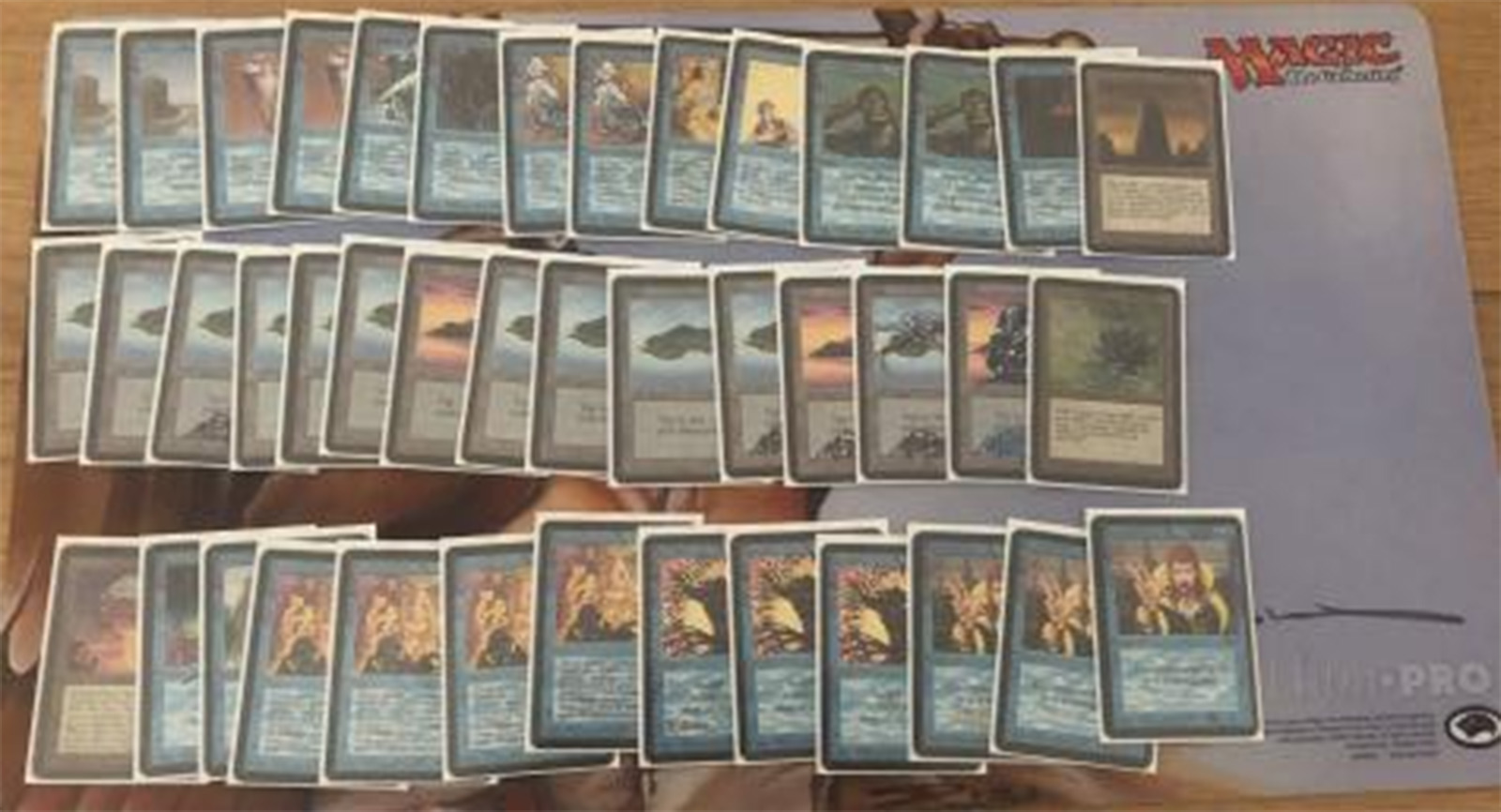
And here is my re-creation of the game 3 board state.
This is my opponent’s board (library and graveyard on the left):
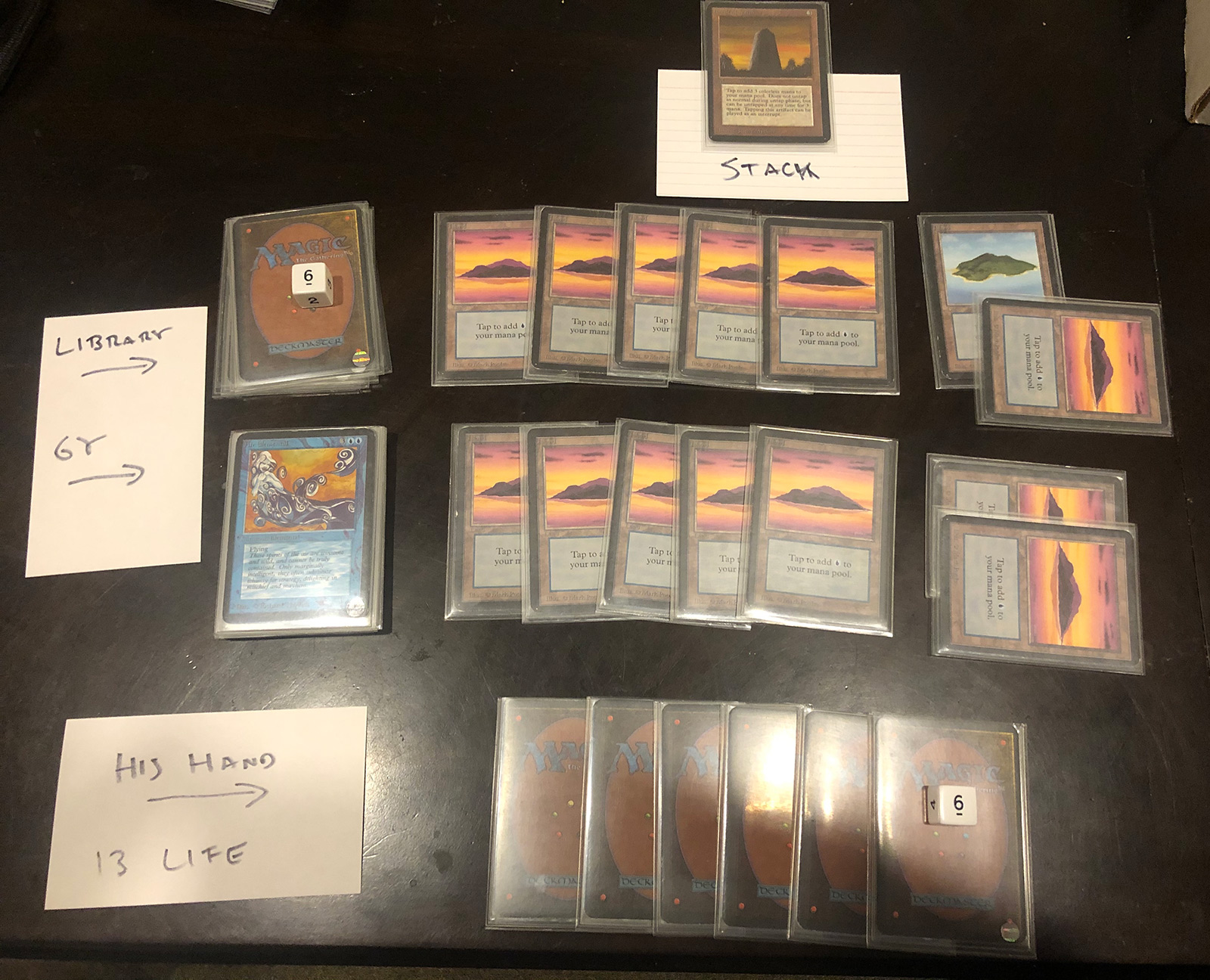
And this is my board:

To summarize, he has all 14 Islands in play (which I did not know at the time) and 6 cards left in his library (how lucky he was to draw all 14 of his Islands). He has 6 cards in hand and 13 life, and has cast a Basalt Monolith.
I have 5 cards in my library, only 12 Islands in play, but a Sol Ring as well. You can see my hand: Spell Blast, Counterspell, Power Sink, Steal Artifact, Control Magic, Icy Manipulator, and Braingeyser. I am at 8 life.
What do I do? I have enough turns, in theory, to just win the game by attacking with Jade Statue. Although I should note that he has Unsummon and Twiddles in his deck, and I had seen them in the previous games, although I didn’t know which ratio or amounts at the time.
The crux of the situation is this: if I can get him tapped out this turn, I can untap and Braingeyser him for the win – a guaranteed win. If I do nothing, I can probably eke out a victory with Jade Statue, but I’ll need 5 successful swings with a Jade Statue or 4 attacks and a Psionic Blast (or a small Volcanic Eruption). I have a Control Magic and a Chaos Orb in case he tries to play blockers, so I’m only wary of Twiddle or Unsummon at this point, and he’s played at least one of each.
So, with Basalt Monolith on the “stack”, what’s my play? I have plenty of options. But I am still far from sure on the best line. Broadly speaking, there are two general lines: let it resolve or try to counter it.
If I successfully counter it, I can probably force through a lethal Braingeyser on my turn.
If I just let it resolve, he’ll have additional mana to pay for Power Sinks or cast his own, so it would make defending my Jade Statue more difficult. Alternatively, I could just use Chaos Orb on it, to get it out of the way, on his end step. Or I could even try to steal it, with Steal Artifact, to give myself even more mana.
I decided that my odds were about even either route, so I decided to try to counter the Basalt Monolith, just to tap him down. Here’s what happened.
First, I cast Power Sink for 8, leaving 5 Islands untapped. He responded with Counterspell, leaving 9 Islands untapped. I cast Spell Blast on his Counterspell, leaving just two Islands untapped. He cast Spell Blast, leaving 5 Islands untapped. I cast Counterspell, tapping down. He cast Power Sink for 1, leaving just 3 Islands untapped. His Basalt Monolith resolved.
He tapped the Monolith, and then cast Twiddle on it, to untap it. He then tapped it against, with 6 colorless. Then he tapped his last untapped pair of Islands, and Braingeysered me for 6. I lost.
This was a devastating loss, for multiple reasons. Not only did I feel as if I had the game within hand, but I felt as if I had made a critical miscalculation – choosing one of the worst paths among my many options.
I resolved to learn from this mistake.
From a macro perspective, I probably would have been better off trying to eke out a win with Jade Statue, and, failing that, finding another opportunity to Braingeyser him.
But from a micro perspective, I probably over-paid for my initial Power Sink. It’s a nuanced difference, but 7 seems like a better figure. He can’t let my Power Sink resolve, but that means playing a Counterspell to fight it off, which makes it more likely I can maintain control over the game. And if I’m worried about the Monolith, I can just Chaos Orb it. Anything else he plays I can Icy.
To be honest, I am extremely skeptical that his deck can function on just 14 Islands with 42 cards. I had just 40 cards, and often wanted 17 Islands, although I felt 16 was sufficient. Even with the Basalt Monolith and Lotus over Sol Ring, I just don’t think that’s a good or solid mana base for this deck, and I’m skeptical that he doesn’t routinely find himself with insufficient mana. I had assumed his deck had many more Islands, because in all three games he drew and played more Islands than I did. That’s variance for you, I suppose.
October Alpha League Report
My October pod also had late drop outs, resulting in another small group.
In Round 1 I won 2-0 against an underpowered Mono Black deck with things like Drudge Skeletons and Black Knights.
In Round 2 I won 2-0 against a Blue-White Sleight Knight deck that was cleverly conceived, but awkwardly implemented.
In Round 3 I won 2-0 against a Black-Green deck, where my opponent got mana screwed in the last game and ended up discarding Thicket Basilisks.
This record was good enough to get me into the Quarterfinals. In the Quarterfinals I went 2-1 against a Mono Black aggro deck.
In the Semifinals I crushed a Goblin deck 2-0, and beat him another two games for fun, often on the back of Volcanic Eruption. The game plan was simple: Counter or Psionic Blast his Goblin Kings, and survive long enough to launch a lethal Volcanic Eruption or Prodigal Sorcerer. Part of surviving is using Crystal Rod as well. In one of the games, Volcanic Eruption was a 7-for-1, killing 6 1/1 Goblins and a Mountain!
I then won the Finals 2-1 against NoobCon 13 champion Martin Lindstrom in a dramatic match that was recorded with commentary for posterity here. I won’t recount the entire match, since it’s an entertaining-enough watch, except to note that I played too cautiously, as I assumed Martin was playing a more optimized list.
November Alpha League Report
Finally, I played in a pod that started out large, and maintained its size, even though I couldn’t connect with every player.
In Round 1 I beat a cool Mono Black common deck featuring Pestilence 2-0.
In Round 2 I won 2-1 against Jeremy Smelski’s WBUG Control deck. This deck was a monstrosity, and we dueled for seemingly hours with Icys. But my deck had Braingeyser, and his didn’t.
In Round 3 I lost 1-2 against a UR Counterburn deck, largely because I flooded out in game 3, drawing 6 Islands in my opening hand, and 13 in my first 15 cards.
In Round 4 I beat Black-Red Aggro 2-0.
In Round 5 I beat Black-Blue Aggro-Control 2-0, although my opponent was mana screwed in game 2, and I didn’t help with a pair of Icys that kept his Swamp and Island tapped for the duration of the game as he discarded a half dozen cards.
In the Quarterfinals I faced off versus Michael “Angelo” Russo, playing the Mono Red hate/burn deck he played to the semifinals in August (see below) with a few tweaks. This was a very fun and interesting match and is worth recounting in detail. Try to follow along closely. I promise it’s worth it.
The first game was a nail-biter. He played a second turn Black Vise which hit me for 6 life before I could get “under” it, and a third turn Copper Tablet, which slowly drained our life totals. In Alpha League, Copper Tablet deals damage to both players on every upkeep, which tends to speed up the game. I threw two Psionic Blasts at him to keep the life totals close and lower my hand size. I also cast a Prodigal Sorcerer, which pinged him a few times before he burned it out. Our life totals on my notepad fell as follows this game:
Angelo: 19, 18, 17, 13, 9, 8, 7, 6, 5, 4, 3, 2, 1, 0
Stephen: 17, 14, 13, 11, 9, 8, 7, 6, 5, 4, 3, 2
After getting under the Vise, I used Counterspells, notably Power Sink, to keep him pinned. On the final turn, I Power Sinked a burn spell to tap him out, and then untapped and cast Volcanic Eruption for 1 when I was at 3 life. His own Copper Tablet finished him off.
The second game was less interesting. He had another turn two Black Vise, and backed it up with a Power Surge the turn I tapped down to cast an artifact. I played around the Power Surge for a few turns, but succumbed shortly thereafter.
The third game was the best of all. Although I was on the play, he hit me with a turn 1 Black Vise, which did considerable damage, as my life total fell from 17 to 14 to 13 to 12 before I got under it. What I did, in fact, was cast Steal Artifact on it, which, using Alpha templating (read the Alpha card), redirected it back at him. Next, he played a Copper Tablet, which started sucking both life totals until I eventually answered it with an Icy Manipulator.
Under Alpha League rules, continuous artifacts “turn off” when tapped. And because First Edition rules indicate that all spells (and by implication abilities) resolve simultaneously, league authorities determined that you can respond to artifacts like Black Vise or Copper Tablet by tapping the artifact to neutralize the effect, even if it’s a static or triggered ability. What that meant was that I could – and did – use my Icy to tap his Copper Tablet in his upkeep to keep the Tablet “turned off.” At this point, my life was just 3, while he was at 13.
He played another Black Vise, which irked me, because I had drawn an Ancestral Recall, which I desperately wanted to use to dig for Volcanic Eruption or a Crystal Rod. It slipped through, but
I managed to keep my hand low enough to avoid getting pinned in the Vise. The real test came, however, when he played a Howling Mine. This would put me in grave danger, but I still felt capable of managing it. So I let it resolve.
Under siege since Turn 1, I felt the ground gradually solidify beneath me, and I began to feel as if I might stabilize my position. I was drawing Counterspells and Power Sinks, but also enough lands and artifacts to stay below the Vise. I made every land drop for 9 turns, and cast a Sol Ring. After playing Sol Ring, I cast a Jade Statue. The Statue took him from 13 to 10, at which point, I could see victory within reach.
He tried to burn me out with a Fireball, which I Power Sinked for just enough, but he responded with a Fork. Fortunately, I had another Power Sink to save the day. At that point, I played the Ancestral Recall to refill my hand. I cast a Psionic Blast on him, sending him to 6, and myself to 1. This was the moment of truth.
I untapped and drew two cards. I played an Island (nine now in play), tapped the Sol Ring to animate the Statue, and sent him to 3 with the attack. My hand was as follows: Counterspell, Counterspell, Power Sink, Jade Statue, and Psionic Blast.
The board state was this: I had, in play, 9 Islands, a Sol Ring (tapped), a Jade Statue (tapped), an Icy Manipulator, and a Steal Artifact enchanting his Black Vise. He had 6 Mountains in play, all tapped, a Howling Mine, and a Black Vise aimed at me, and a tapped Copper Tablet.
The problem is that I had 5 cards in hand and 1 life with a Black Vise on me. I could cast Psionic Blast now or at any point to draw the game. But I felt I could win here. The question was: how? If I just passed the turn, with five cards in hand, based upon how game 2 played out, I would expect him to play nothing, so that I might die to the Vise, recognizing that I was holding plenty of countermagic. So I hastily decided to play the Jade Statue to avoid this eventuality. I made a simple calculation that my two Counterspells had a good chance of holding him off. And if things looked like they were going south, I could fire off the Psionic Blast and draw the game, leading to a new “game 3” where I was on the play again.
So I tapped 4 of my 9 Islands, and cast the Jade Statue, and passed the turn. I used the Icy to tap his Copper Tablet, leaving just 4 Islands untapped.
He drew two cards with the Howling Mine, and I began to suspect that my plan was less secure than I had imagined. I knew that his deck was loaded with X burn spells, but failed to account for the fact that each lethal spell would just cost him just two mana. If he had three burn spells, he could play more than I could counter, even with two counterspells. He played a Mountain, and I had a feeling of dread. He cast a Fireball for 1. Welp, I felt committed to the original plan, so I Counterspelled it, leaving just two Islands untapped. He played another. I Counterspelled that. He cast Lightning Bolt, and I was dead. I should have just played Psionic Blast in response to the first Fireball.
I sat there in stunned disbelief for a few minutes after we exchanged pleasantries and he logged off, and alternative lines of play, all resulting in my victory, began hitting me like a ton of bricks. All of them involved not playing the second, and irrelevant, Jade Statue.
The first and clearest path to victory was to tap the Copper Tablet with Icy on his upkeep, as I did, but leaving myself 8 mana to cast Power Sink on his first burn spell (should he try), and them I’m on clear. If he elected to play nothing, as I surmised, no matter.
The trick – and the key – was that I could use my Icy on my own upkeep to tap his Black Vise. I wouldn’t have to worry about his Copper Tablet anymore, because it was tapped on his turn, and because my Jade Statue would kill him in combat. He would never get another untap step, let alone another upkeep.
This last minute switcheroo on the Icy was not even something I had considered, as it would have had to overcome the mental lock I had on keeping the Icy on the tablet and the further recognition that tapping the Vise would turn it off, a counterintuitive realization for a player conditioned under the modern rules. It’s unlikely he would have had enough burn spells to try to kill me before my own combat step. And if he tried, the Power Sink would work just the same.
Another line, a little more fraught, but also a clear path to victory, is this: Icy his Tablet on his upkeep. If he plays anything, Power Sink it, and I’m all clear. But if he doesn’t, as I surmise, I can cast Psionic Blast on my upkeep, and then counter it with one of my own Counterspells, so that I don’t even have to use the Icy. That only uses 5 of my 11 mana, leaving me more than enough to Counter and/or Sink another instant spell (such as a Lightning Bolt), and likely enough to attack for the win.
There is yet a third line: do nothing. If I Icy his Copper Tablet in his upkeep, he has just two options: play a spell, in which case I can counter it, and I’m under the Vise. Or not play a spell, in which case I have to either tap it or play a spell in my upkeep. But here’s the rub: even if we put him on a 90% chance of doing nothing, there is still a chance he will do something. I should maximize my chances to win by playing to that possibility. Even if he doesn’t play anything, by doing nothing as well, two things can happen. First, in my upkeep, I can cast Psionic Blast to draw the game, which is certainly better than losing. But second, I might actually realize, assessing the situation afresh and in that moment, that my Icy can simply tap the Black Vise on my next upkeep. So doing nothing may well have led me to victory even beyond the lost mana from Jade Statue, and the pressure it then placed on him to kill me. Giving him a belief that his Vise might finish me off leads to many more pathways where I end up winning. My line closed off most of those pathways.
Even though I lost the match, I felt nearly as good about it, simply because I feel that I leveled up in my knowledge of the intricacies of both my deck and Alpha League play. It was quite enjoyable.
December Alpha League Report
It’s a bit anticlimactic after that dramatic November playoff round, but here is how the December league played out.
In Round 1 I defeated a Red-Green Burn deck 2-0.
In Round 2, I defeated a Blue-White Control deck 2-0, in a pair of very interesting games.
In Round 3, I defeated a very underpowered Red-Green Aggro deck 2-0.
In Round 4, I overcame a very cool Blue-Green artifact combo deck (sporting Time Vault/Animate Artifact/Instill Energy combo, as well as others) 2-0.
In Round 5, I defeated Drew Epstein’s Red-Green Living Lands deck 2-1. In Game 1 he baited me with an Orcish Artillery and Living Lands, and then knocked me out of the game with a Tsunami, taking out 8 of my Islands! I played around Tsunami the rest of the match, and won some tight games.
In Round 6, I narrowly defeated a Mono White Benalish Hero/Mesa Pegasus banding deck 2-0. Prodigal Sorcerer and Volcanic Eruption were amazing.
In the Quarterfinals, I defeated a truly nasty Orcish Artillery Combo deck in the hands of Robert Bialkin, 2-1. This deck is brutal because it has the best and most efficient two-card unrestricted combo in the format of Orcish Artillery and Circle of Protection: Red. Here’s what it looks like.
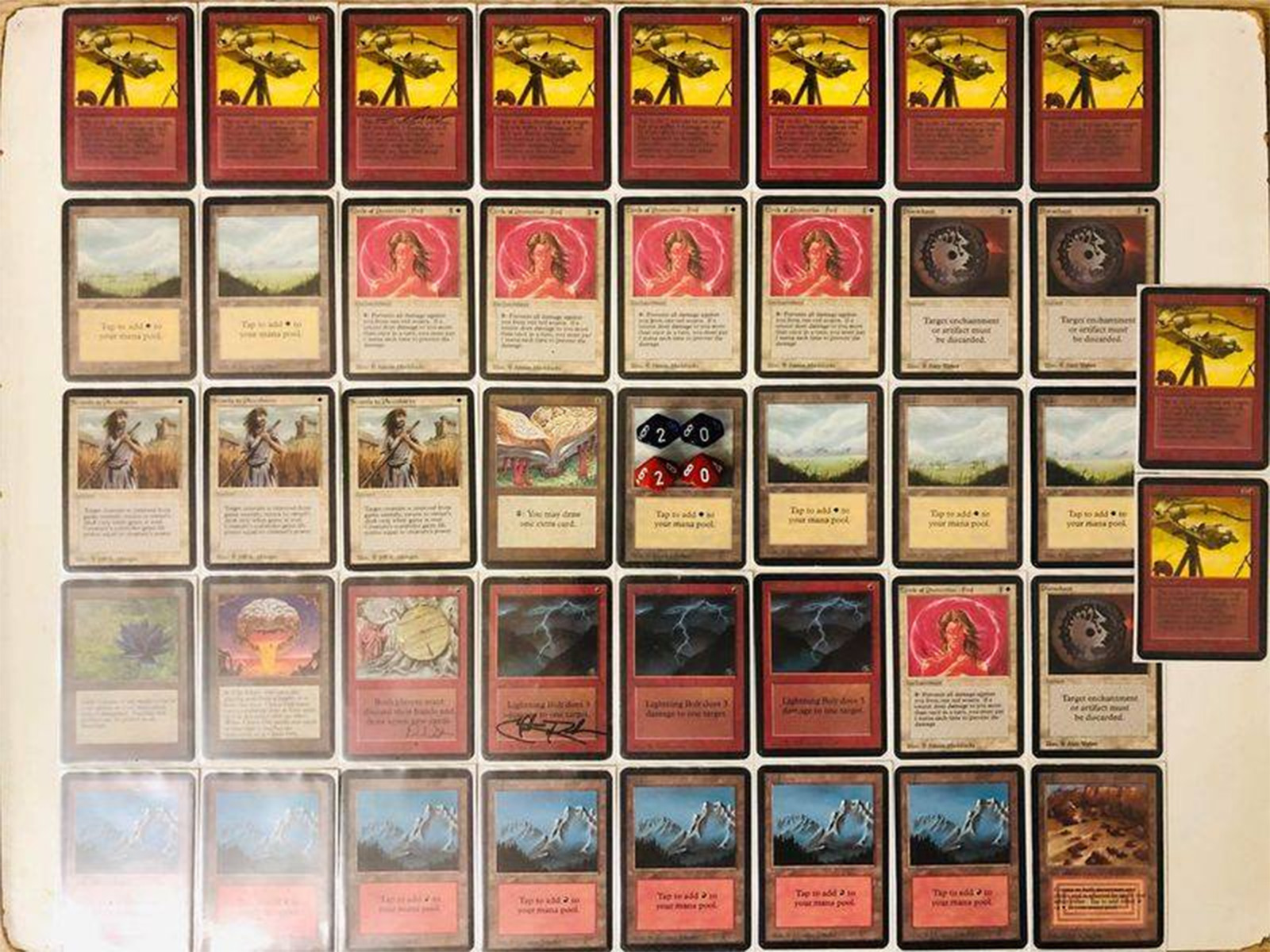
My ace was Volcanic Eruption, which used at least once to blow up his board. But the other key to fighting this deck is simply to figure out, based upon the game state, whether to keep COP: Red off the table or not. If you can keep COP: Red off the table, then the Artilleries lose significant value. The combo player has to attack a few times to keep life-parity. Against my deck, which is loaded with Psionic Blasts and other direct damage, going for my throat is a risky strategy. Also, if you can keep COPs off the board, then Icy’s actually matter, and can tap Artilleries to thwart attacking. But, on the other hand, if they are flooded with COPs, but light on Artillery, then the goal should be to counter and/or remove the Artillery, gaining virtual card advantage from the dead COPs. In short, the game plan is highly situation-sensitive.
In the Semifinals I played against Rodolphe Ambroise, playing a deck I long dreaded: when someone finally figured out that Blue-White Control could be built on the back of Jade Statues instead of Serra Angels. The reason I dreaded this was that the white splash gave access to Disenchant and Swords to Plowshares, which are excellent against my deck.
These games were awkward and frustrating. In the first game, Rodolphe Disenchanted my second turn Chaos Orb, and then slipped a third turn Disrupting Scepter onto the table. I was holding Spell Blast, instead of Power Sink, and couldn’t stop the Scepter, which eventually won the game. Game 2 was a much better game, but I could never really get ahead. He gradually destroyed or Plowed my Statutes, and then resolved a Braingesyer for 5, from which I could never recover. His Chaos Orb controlled the game, preventing me from using a Steal Artifact on his Jade Statute or The Hive. My Volcanic Eruption cleaned away Wasp tokens, but his card advantage finally overtook me. I couldn’t get the right configuration of spells to tactically optimize – generally too many spells and too few counterspells.
Rodolphe went on to defeat Simon Christie in the Finals.
Final Thoughts on Mono Blue Control
I wasn’t sure what advantages Mono Blue Control might hold over Blue-White or Blue-Red, but I think they are considerable. The first and most important is mana consistency. Counterspell is obviously the best Alpha Counterspell, but it is unreliable in a deck that has to run just 8 or so Islands. In Mono Blue, Counterspell is at maximum power.
Second is the ability to abuse and utilize Volcanic Eruption, easily an MVP candidate for this deck, and the tool that allows me to crush Mono Red decks when I cast it. Red-Blue can’t use this, and getting the triple blue required to cast it in the Blue-White decks is difficult.
Finally, Mono Blue makes it easier to utilize Crystal Rod, since all of my spells are either blue or artifacts.
I don’t know if this is the best deck in the League format, but it certainly seems like it’s up there.
Before closing out, I thought you might enjoy seeing the League winners from 2020, as far as I could track down decklists.
Hall of Champions
April 2020 Winner – Michael Angelo Russo
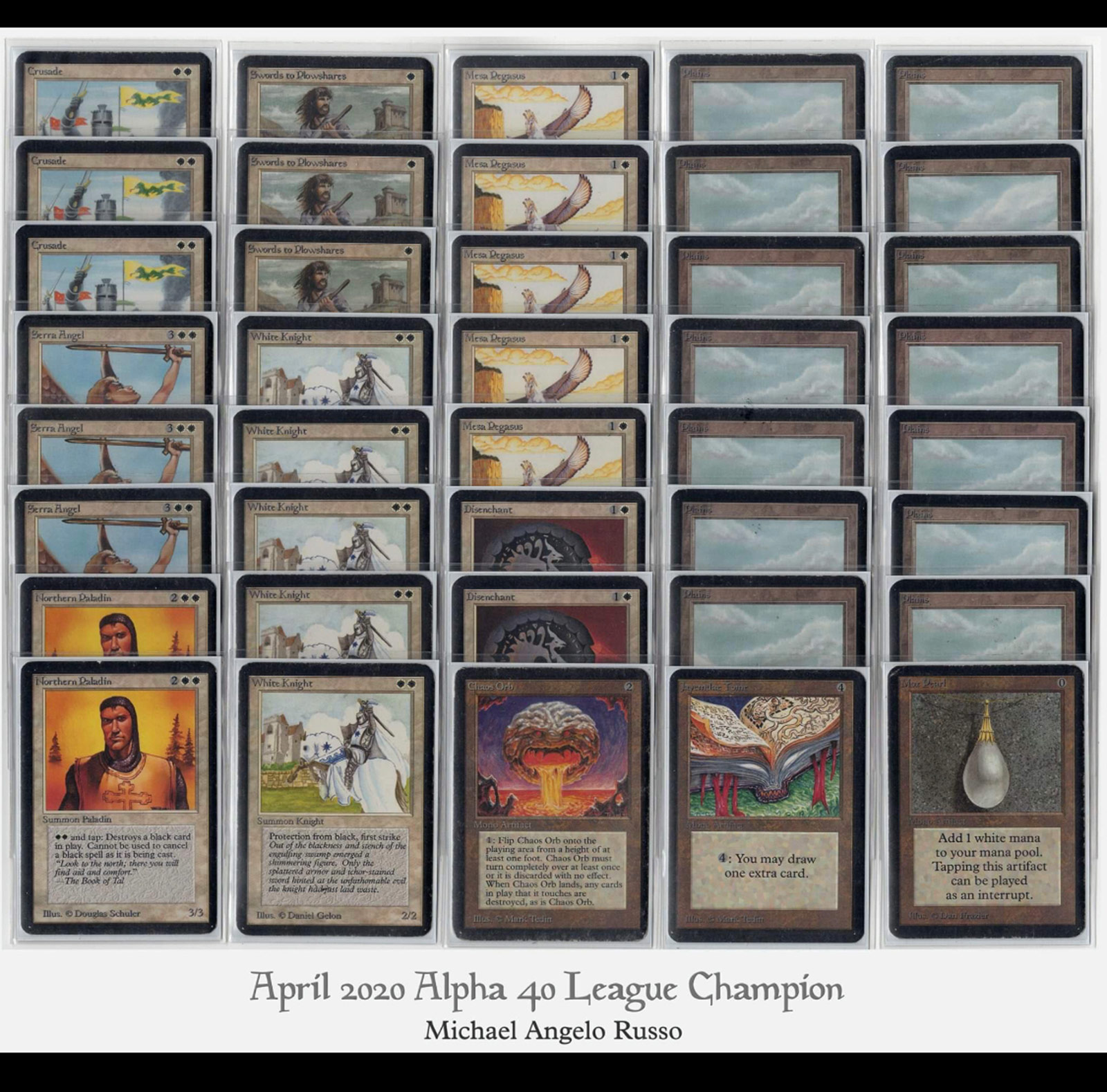
May 2020 Winner – Valerio Gregori

Valerio’s tournament report and deck tech.
May 2020 Runner-Up – Scott Latham
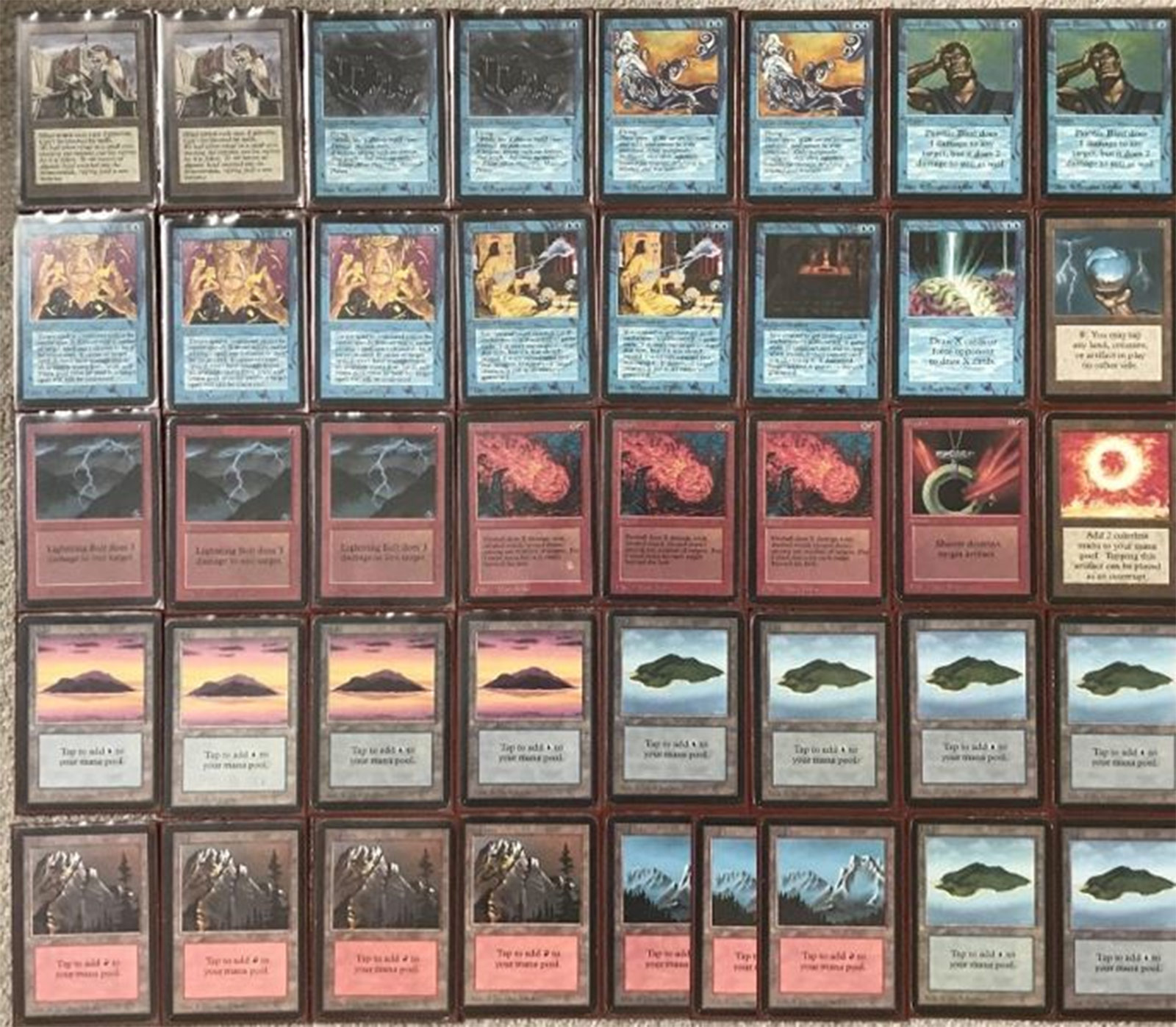
June 2020 Winner – Joel Mick
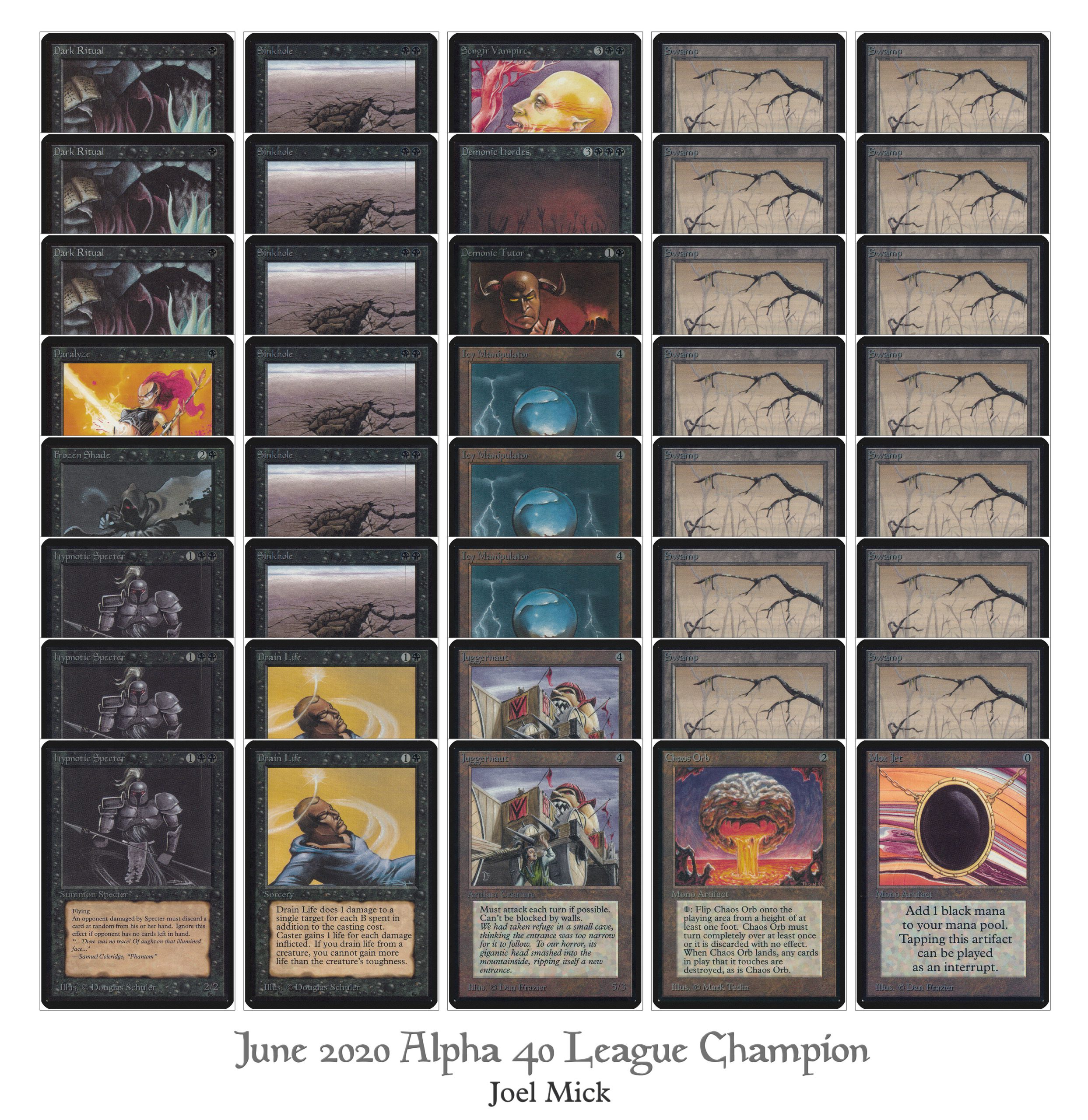
June 2020 Runner-Up – Valerio Gregori (playing same list above from May)
July 2020 Winner – Stephen Menendian
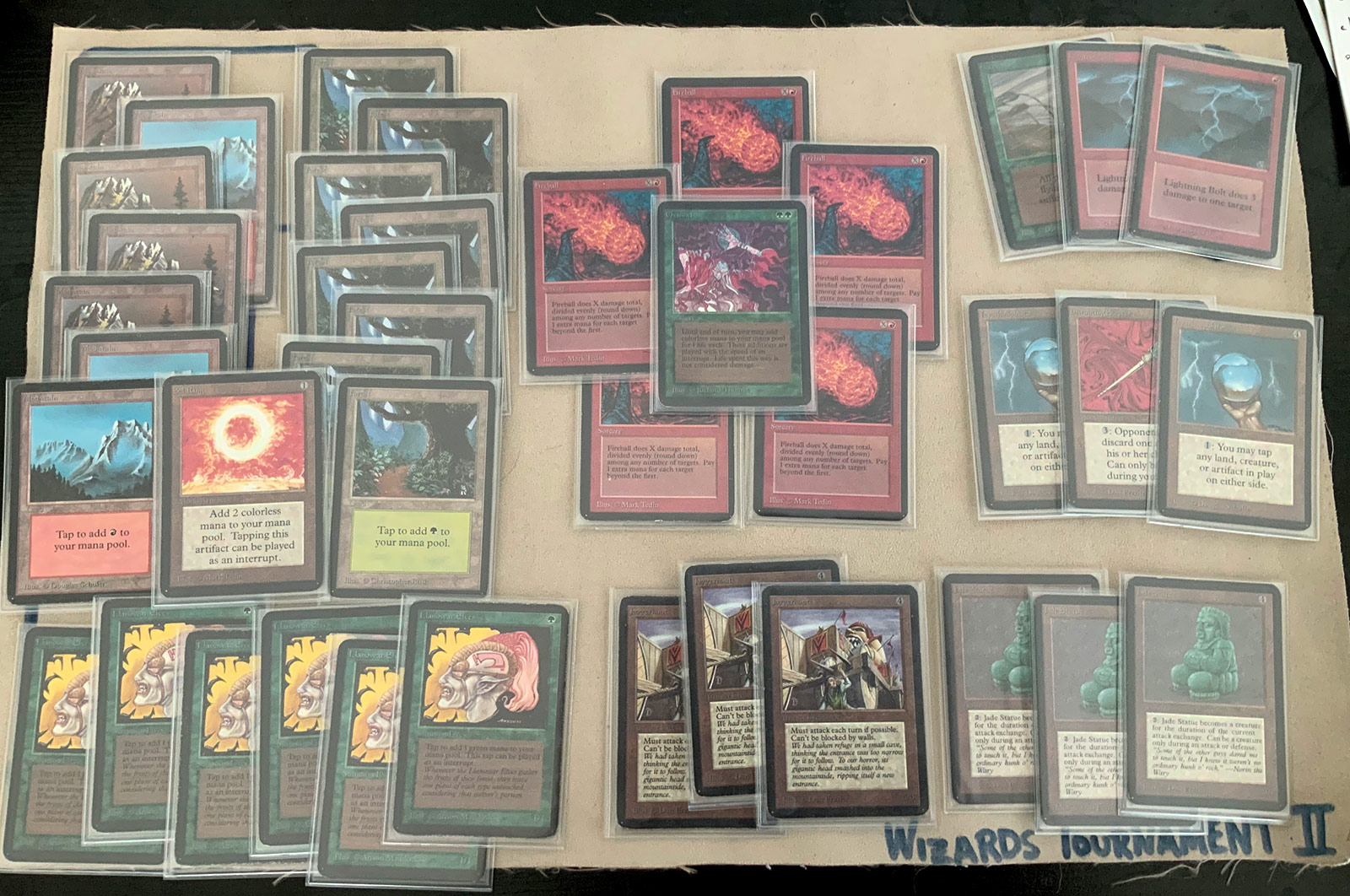
July 2020 Runner-Up – Joel Mick
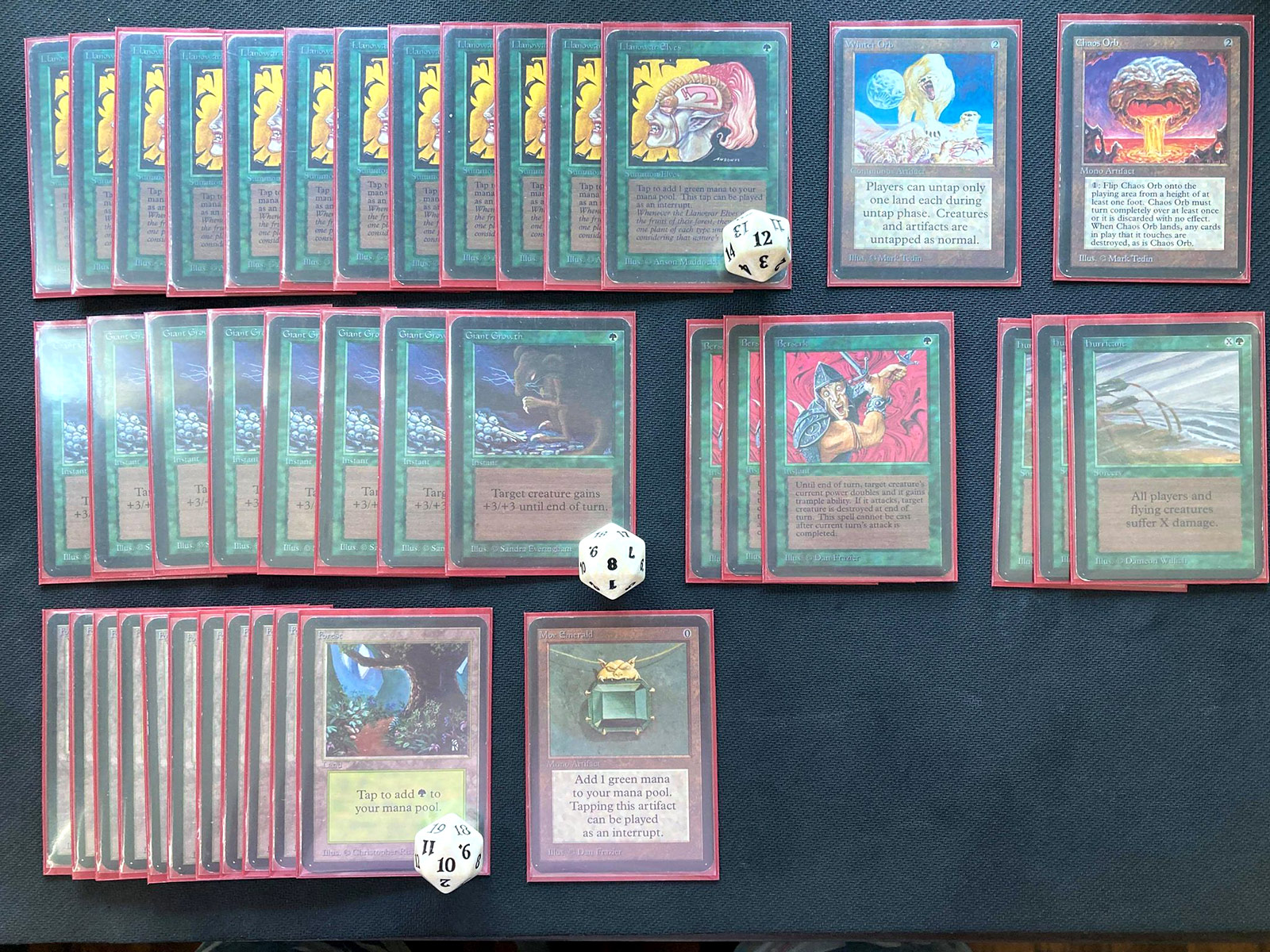
Mono Green Deck Tech and Finals match on YouTube.
August 2020 Winner – Eric Lin
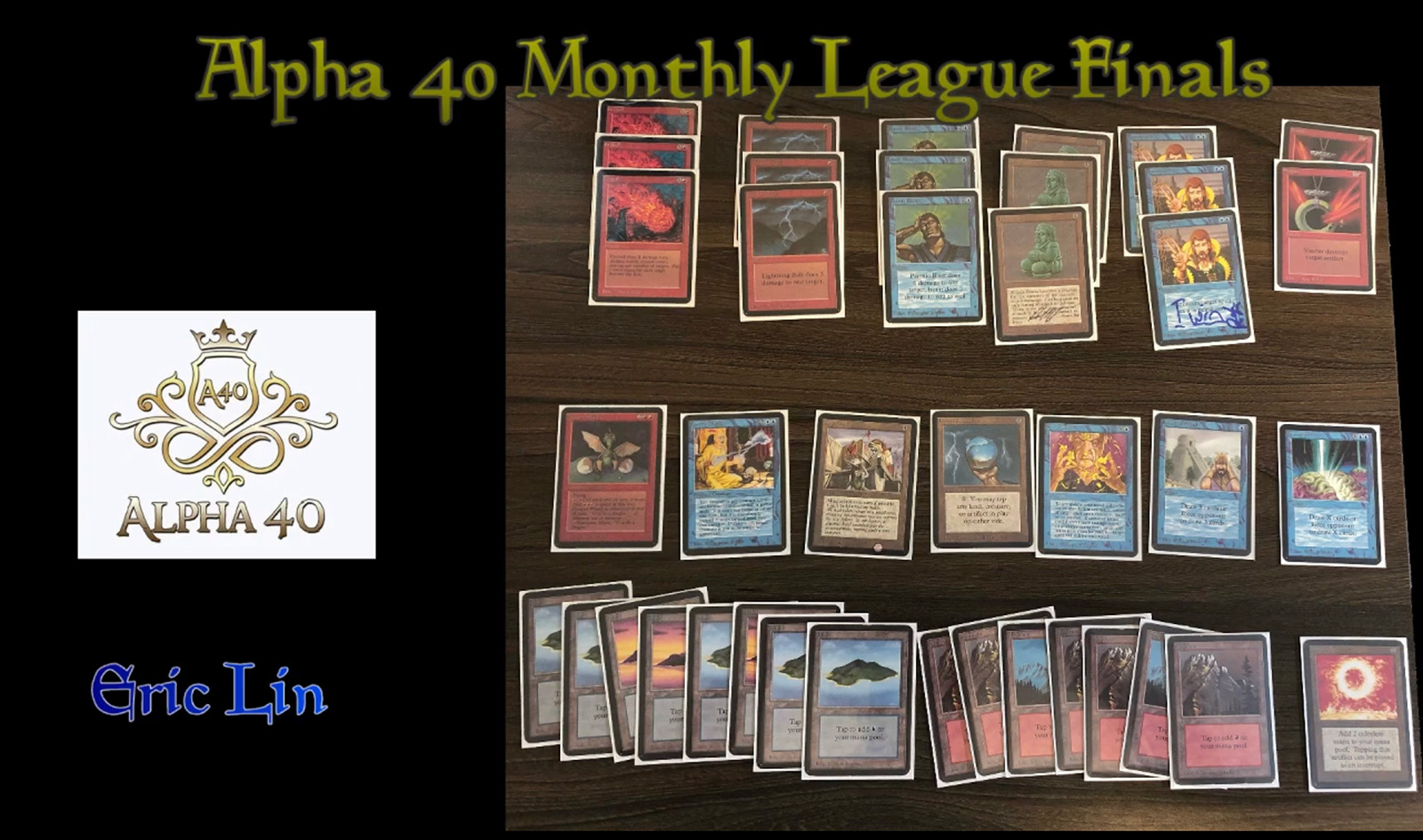
August 2020 Runner-Up – Michael Angelo Russo
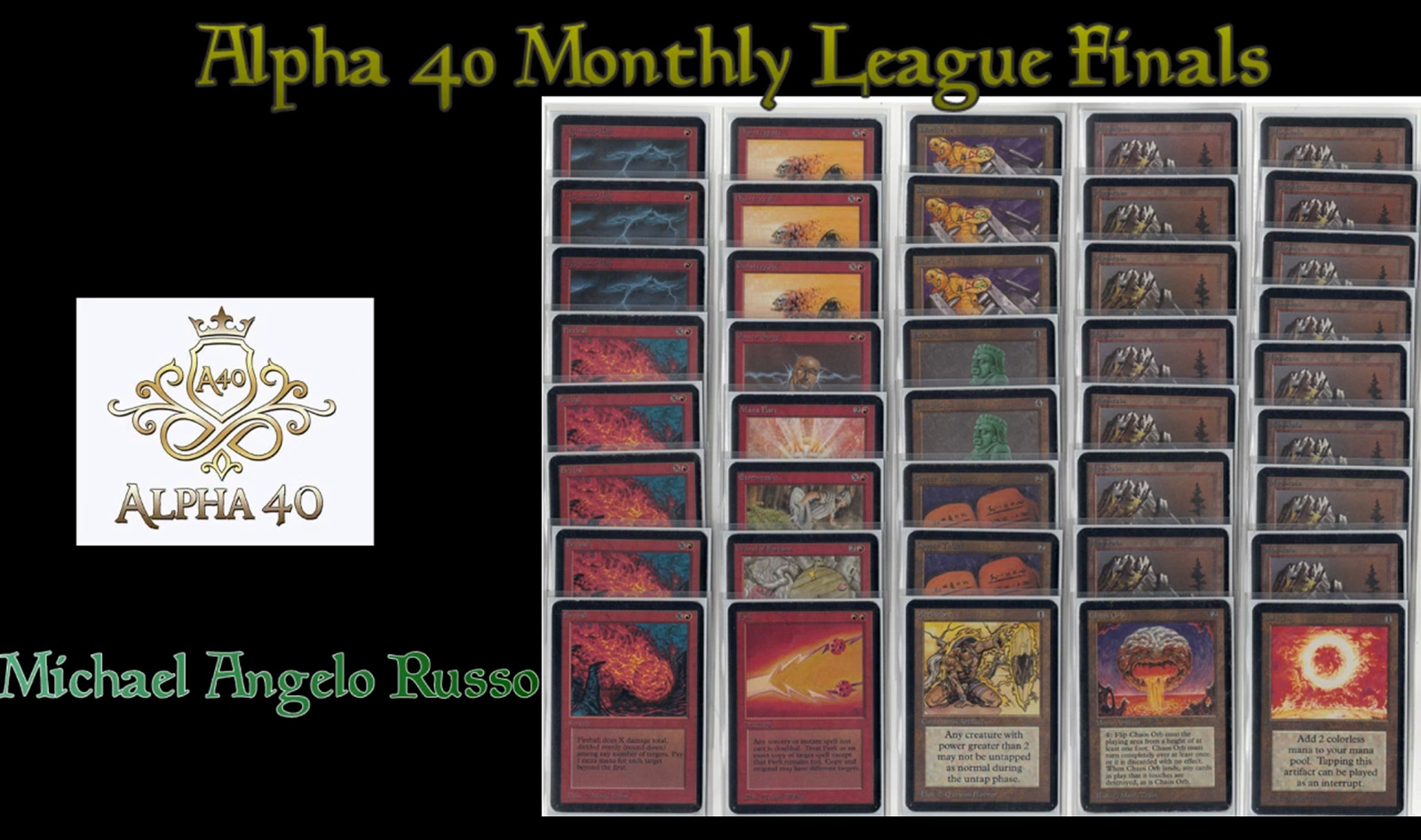
September 2020 Winner – Joel Mick
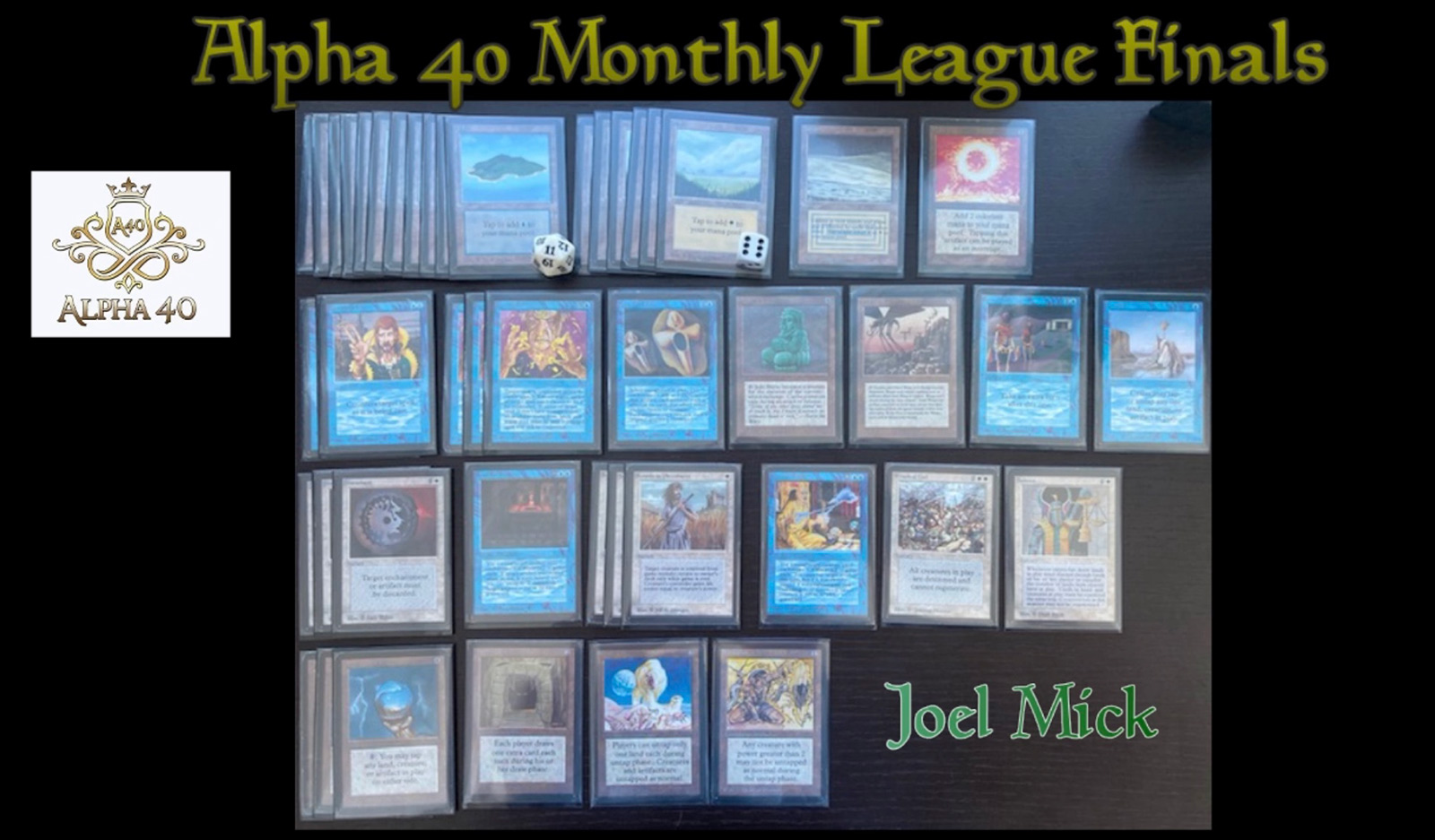
September 2020 Runner-Up: Mitja Held
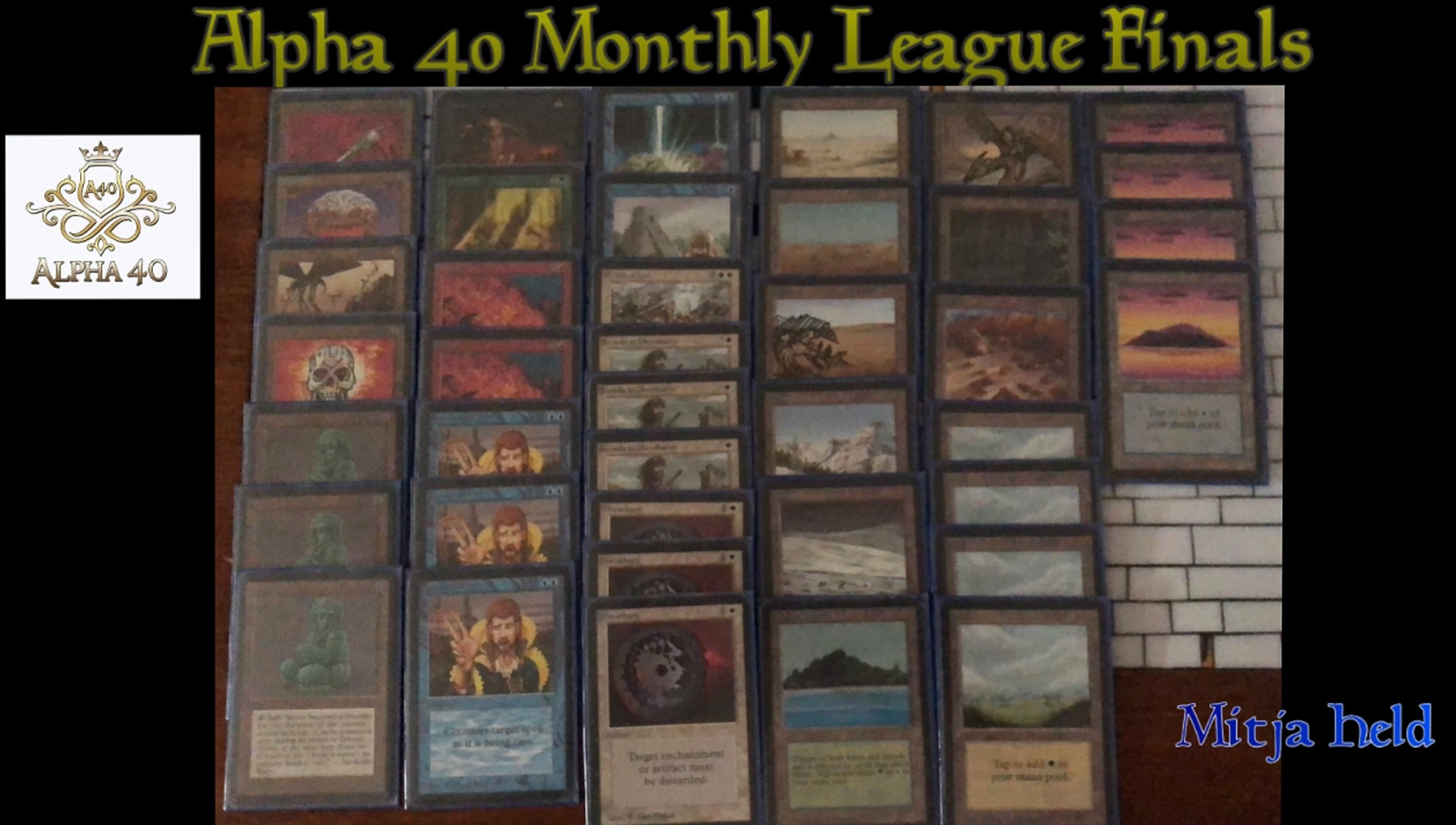
October 2020 Winner – Stephen Menendian
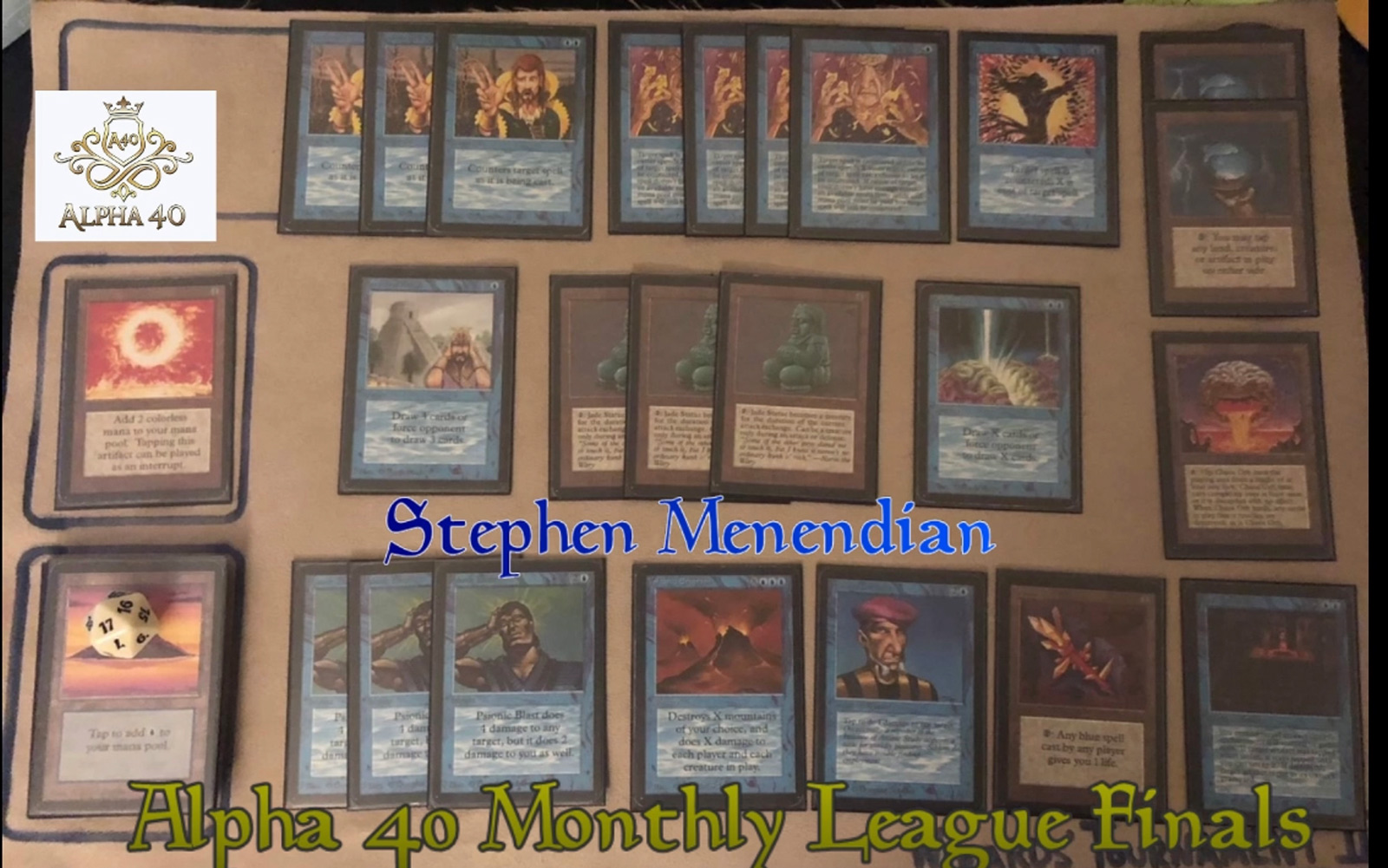
October 2020 Runner-Up: Martin Lindstrom
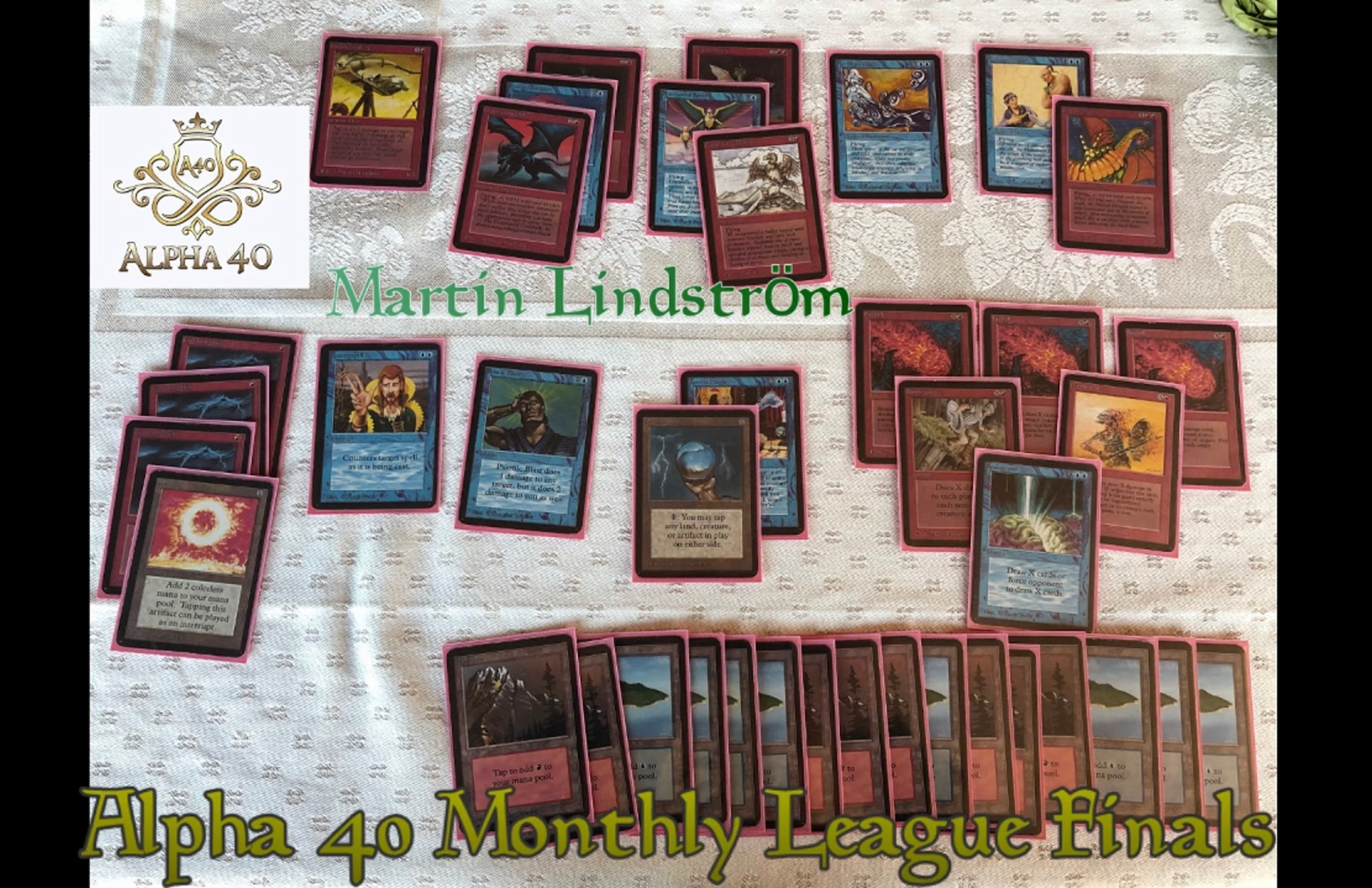
November 2020 Winner – Simon Christie with Orcish Artillery Combo

November 2020 Runner-Up – Jorgo Vanhees with Mono-Green Stompy
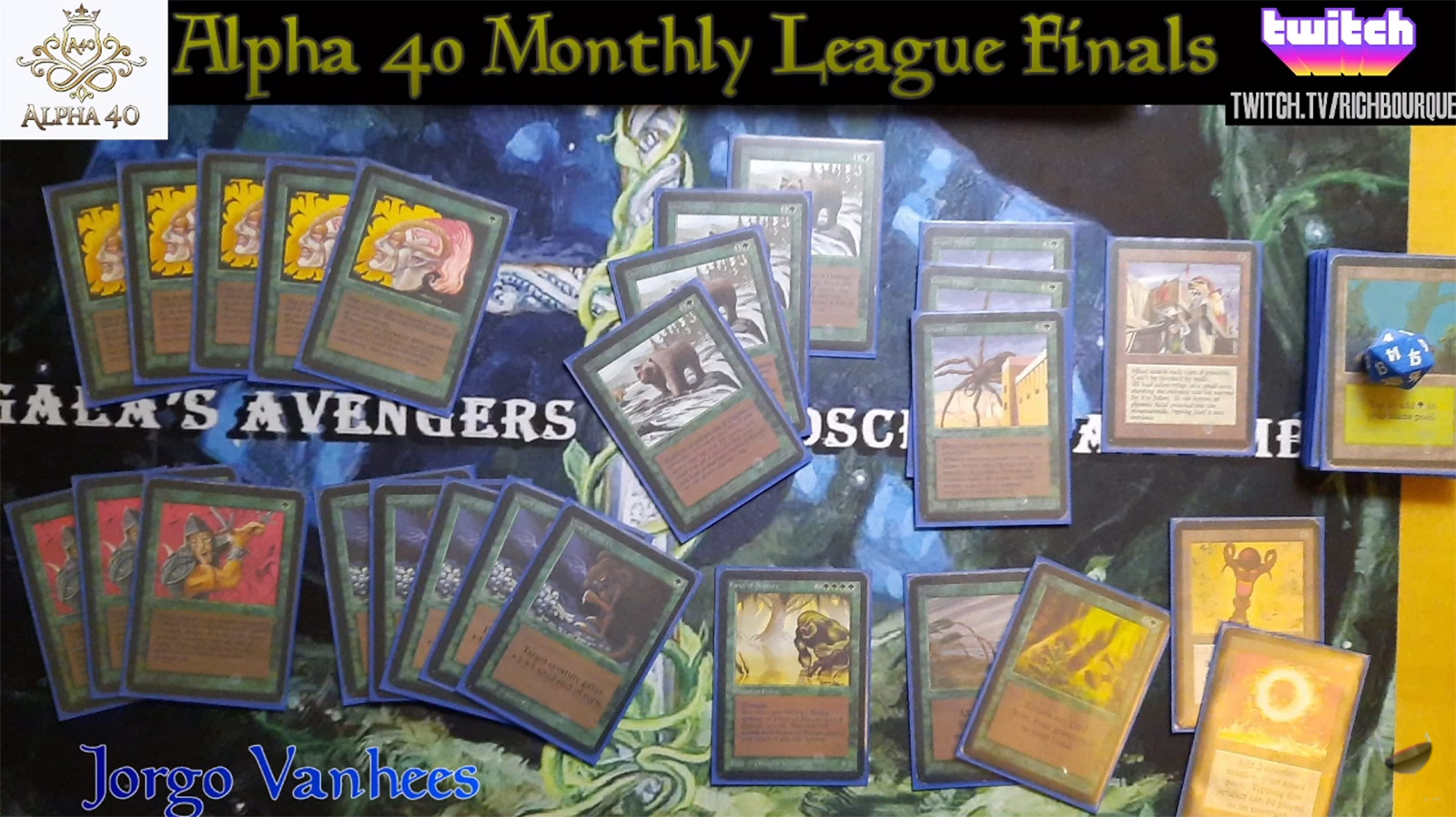
December 2020 Winner – Rodolphe Ambroise with Blue-White Control
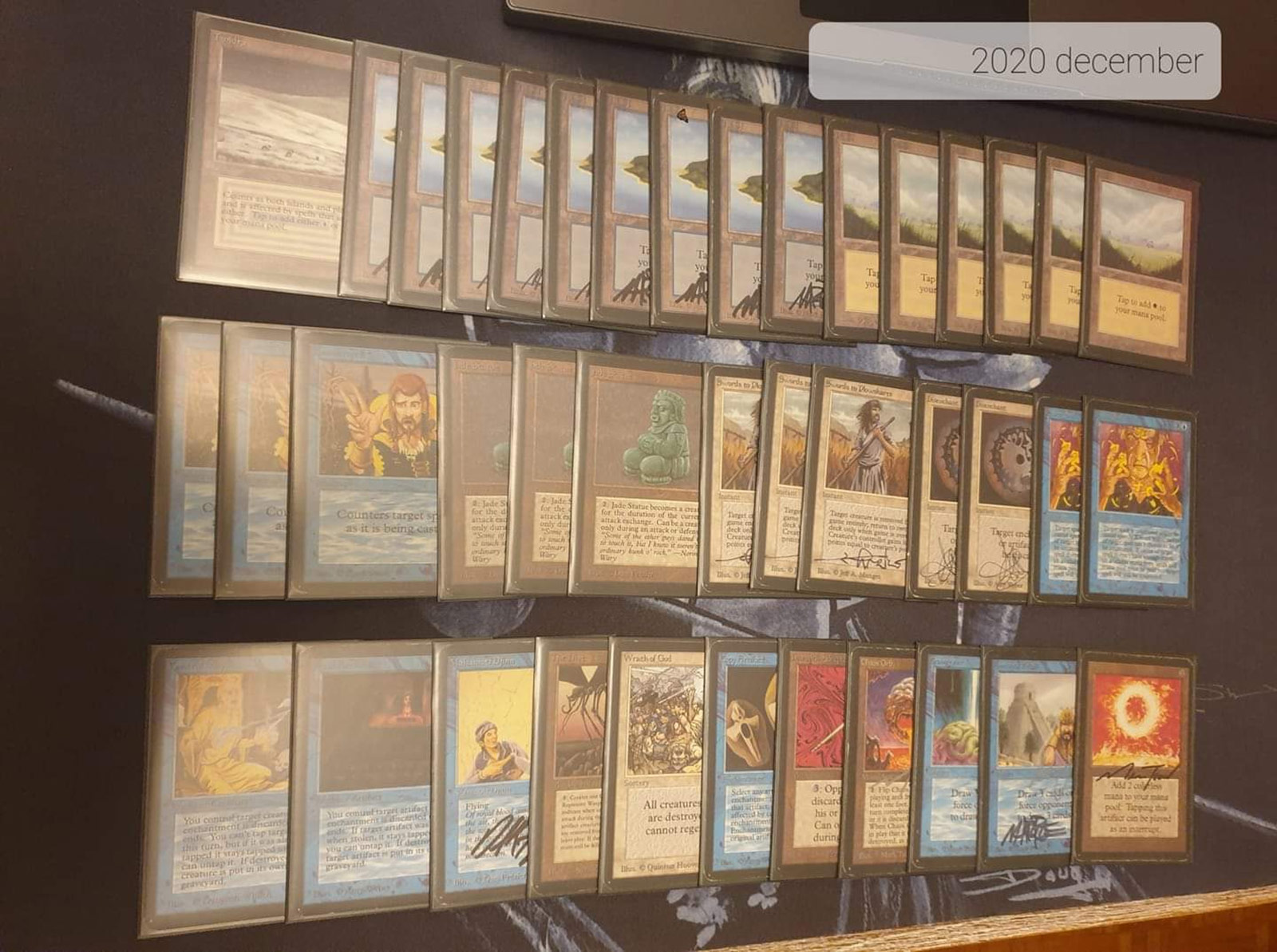
December 2020 Runner-up: Simon Christie with Orcish Artillery Combo (same deck as November, above)
Until next time,
Stephen Menendian

